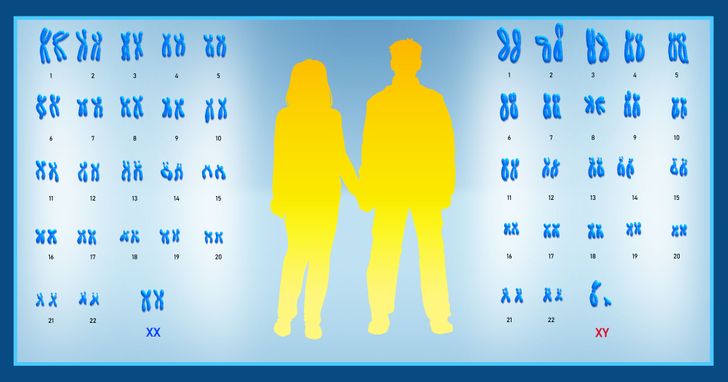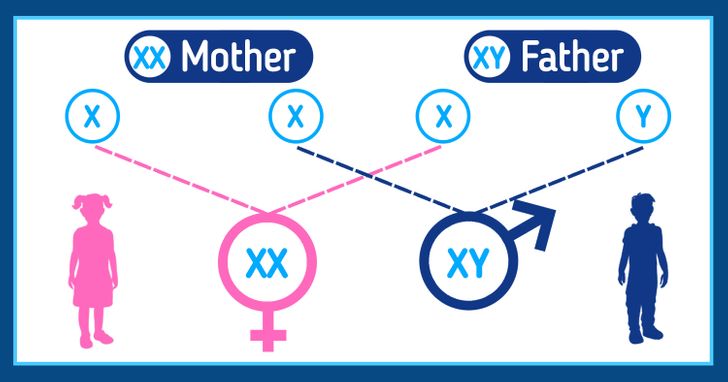How Many Chromosomes a Human Has
A chromosome is a long, coiled DNA molecule that contains all of the genetic material of the body or part of it. Chromosomes are found in the nuclei of cells, but they can be seen under a microscope only during cell division, when the DNA becomes more tightly packed.
5-Minute Crafts would like to tell you about how many chromosomes a human has, in which cases their number can be bigger or smaller, and how they affect the gender of a future baby.
How many chromosomes does a human have?

Normally, each cell of the human body contains 46 chromosomes, or 23 pairs.
22 of these pairs are called autosomes because they look the same in both males and females. The 23rd pair is sex chromosomes, they differ depending on gender. In women, the 23rd pair of chromosomes is represented by 2 copies of the X chromosome, and in men, it’s represented by one X chromosome and one Y chromosome.
Not all living organisms contain exactly 46 chromosomes in the nuclei of their cells. A fruit fly, for example, has 8 of them, a koala and a kangaroo have 16, a snail has 24, a meerkat has 36, and a pigeon and a dog have as many as 78 chromosomes. But this is not the limit. In some plants, the number of chromosomes exceeds 200, and the absolute record holder is the ciliate Oxytricha trifallax, that contain approximately 16,000 nanochromosomes.
What happens if the number of chromosomes is bigger or smaller?
The bigger or smaller number of chromosomes in a person can sometimes lead to a variety of genetic disorders. One of them is Down syndrome. This is a condition where the 21st pair of chromosomes has an extra third copy. In medicine, this phenomenon is called trisomy. It can also be found on chromosome 18 (Edwards syndrome) or chromosome 13 (Patau syndrome). Some chromosomal disorders can be diagnosed in advance, during an examination.
How do chromosomes affect the gender of a future baby?

A person’s gender depends on the pair of sex chromosomes that forms at the stage of conception.
As we said earlier, in women, a pair of sex chromosomes is represented by 2 copies of the X chromosome, and in men, it’s represented by one X and one Y chromosome. During conception, the mother and father give one chromosome from their pairs to their future child. A woman can only give the X chromosome, because her 23rd pair only consists of them. And a man can give an X or a Y chromosome. In the first case, a girl will be born, in the second, a boy will be born.
The process of gender determination is random: it’s impossible to predict in advance which sex chromosome will be passed on to the future child from the father. It’s also impossible to influence this process from the outside, so far.